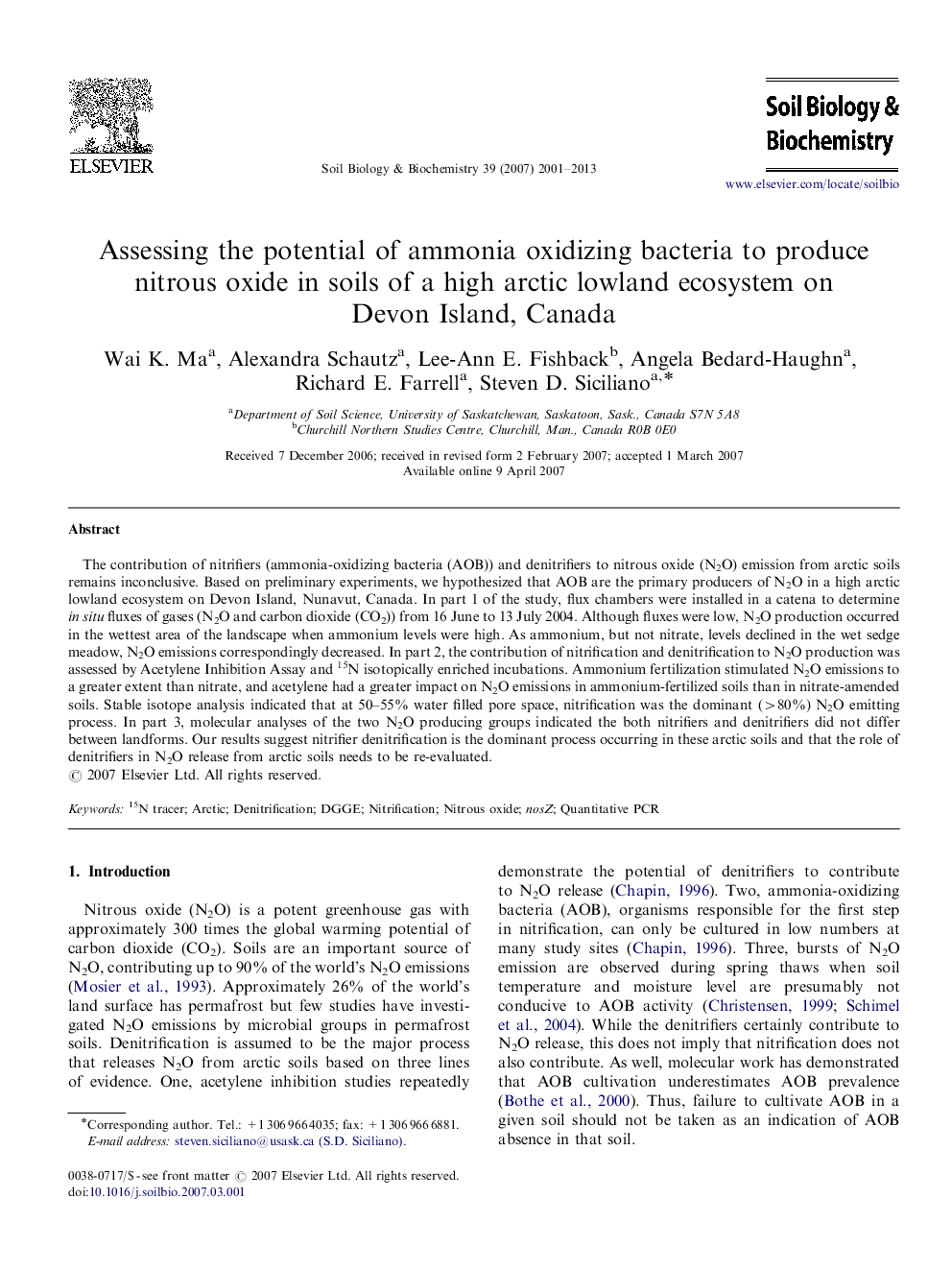| Article ID | Journal | Published Year | Pages | File Type |
|---|---|---|---|---|
| 2026065 | Soil Biology and Biochemistry | 2013 | 13 Pages |
Abstract
The contribution of nitrifiers (ammonia-oxidizing bacteria (AOB)) and denitrifiers to nitrous oxide (N2O) emission from arctic soils remains inconclusive. Based on preliminary experiments, we hypothesized that AOB are the primary producers of N2O in a high arctic lowland ecosystem on Devon Island, Nunavut, Canada. In part 1 of the study, flux chambers were installed in a catena to determine in situ fluxes of gases (N2O and carbon dioxide (CO2)) from 16 June to 13 July 2004. Although fluxes were low, N2O production occurred in the wettest area of the landscape when ammonium levels were high. As ammonium, but not nitrate, levels declined in the wet sedge meadow, N2O emissions correspondingly decreased. In part 2, the contribution of nitrification and denitrification to N2O production was assessed by Acetylene Inhibition Assay and 15N isotopically enriched incubations. Ammonium fertilization stimulated N2O emissions to a greater extent than nitrate, and acetylene had a greater impact on N2O emissions in ammonium-fertilized soils than in nitrate-amended soils. Stable isotope analysis indicated that at 50-55% water filled pore space, nitrification was the dominant (>80%) N2O emitting process. In part 3, molecular analyses of the two N2O producing groups indicated the both nitrifiers and denitrifiers did not differ between landforms. Our results suggest nitrifier denitrification is the dominant process occurring in these arctic soils and that the role of denitrifiers in N2O release from arctic soils needs to be re-evaluated.
Related Topics
Life Sciences
Agricultural and Biological Sciences
Soil Science
Authors
Wai K. Ma, Alexandra Schautz, Lee-Ann E. Fishback, Angela Bedard-Haughn, Richard E. Farrell, Steven D. Siciliano,
